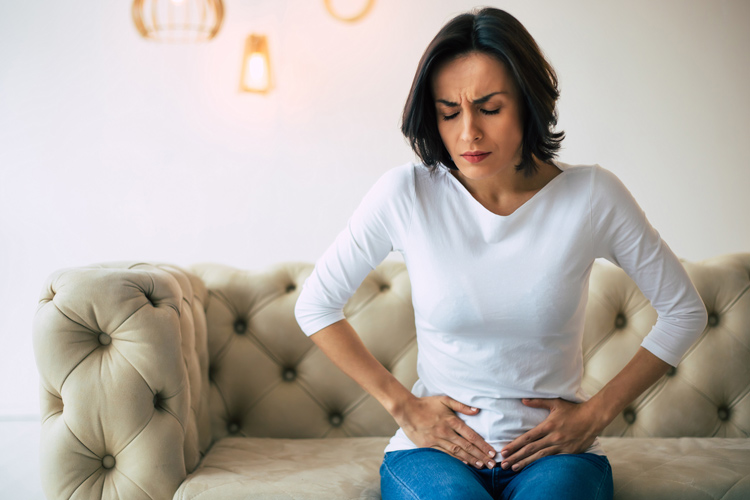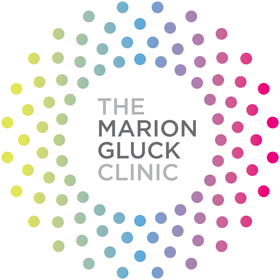
Endometriosis is a common condition that affects 1 in 10 women worldwide. The condition causes cells similar to those in the lining of the uterus to form elsewhere in the body, causing chronic pain, infertility, bowel problems, and more. In light of Endometriosis Awareness Month (which takes place in March each year), we are exploring the implications of endometriosis and the effective hormone balancing treatments available.
What Is Endometriosis?
As aforementioned, endometriosis is a condition that causes cells similar to those in the endometrium to form elsewhere in the body, usually around the ovaries and fallopian tubes, but it can spread to other pelvic organs and, though rarely, beyond this. This tissue acts just as it would inside the womb: thickening, breaking down and bleeding each month, and causing severe pain.
Those with endometriosis will likely experience very painful and heavy periods, pain before the period starts, fatigue, fertility problems, pain during or after sex, and painful bowel movements. Some endometriosis sufferers may also experience pain during ovulation, spotting between periods, back and leg pain, and depression.
Diagnosis Of Endometriosis
Unfortunately, diagnosis of endometriosis is often delayed by an average of eight to 12 years from the onset of symptoms. This is, in part, because endometriosis sufferers often believe that their condition is just severe period pain, rather than endometriosis. But it can also be misdiagnosed due to the similarities between its symptoms, and symptoms of other conditions, including irritable bowel syndrome (IBS), ovarian or uterine cancer, polycystic ovary syndrome (PCOS) and pelvic inflammatory disease (PID).
Dr Ghazala Aziz-Scott, Hormone Doctor at Marion Gluck Clinic, says, “It is my mission to raise awareness of endometriosis. In public healthcare, knowledge about endometriosis exists on a very simplistic level, and it is largely about symptom relief. There is little thought given to the underlying immune mechanisms and genetics. I think if women knew more about these connections and generally had more awareness of the condition, it would encourage them to tackle it from a younger age, rather than waiting years for a diagnosis.”
The only way to fully diagnose endometriosis is through a laparoscopy, which is a keyhole surgery that allows a surgeon to see if there are any endometrial deposits within the pelvic area. These deposits cannot be detected with a pelvic ultrasound scan. A scan will reveal the structure of the uterine wall, fibroids, the structure of the ovaries, follicles within the ovaries, and sometimes ovarian scar tissue, but not endometrial deposits.
Without a laparoscopy, a confident (but not full) diagnosis for endometriosis can be obtained through symptom analysis, and if investigations (such as a pelvic ultrasound) have ruled out other conditions such as cancer, fibroids or PCOS.
Conventional Treatments For Endometriosis
Because endometriosis is difficult to diagnose, the correct treatment can be challenging to obtain. In many cases, patients first visit their GP presenting with severe period pain, and may be told to take pain-relieving medication during their periods as a response. However, this medication may not be effective enough if the pain is very severe, and it will not help with other symptoms such as fatigue; more importantly, it will not treat the root cause of endometriosis, which is a theme with many treatments available through public healthcare.
Conventional treatments include:
- Birth control pill
- Gonadotropin-releasing hormone (GnRH) blockers
- Mirena coil
- Laparoscopy
- Hysterectomy
Hysterectomy is a drastic option for the treatment of endometriosis, but is sometimes explored if all other treatments have failed and the symptoms of the conditions are persistent and severe. This is almost always unnecessary and means the patient will not be able to bear children. It will also induce a surgical menopause, which comes with long-term hormonal deficiency problems which will need to be treated with hormone replacement therapy.
The root cause of endometriosis involves metabolic processes within the body, like inflammation, estrogen dominance and an abnormal immune response. These are, unfortunately, not addressed in conventional treatments, which can mean that symptoms persist and women feel frustrated and like they are at a dead-end with treatment. But don’t lose hope, effective treatment is available, without having to resort to life-changing surgery.
Estrogen Dominance And Its Role In Endometriosis
When hormones become unbalanced, the body can develop estrogen-dominant conditions such as endometriosis, polycystic-ovary syndrome (PCOS), breast cancer, uterine cancer, and fibroids. Endometriosis sufferers often have a high level of estradiol (a type of estrogen) in their body, which causes the inflammation and pain associated with this condition; it is also linked to weight gain, acne and loss of libido. Estrogen dominance can be caused by toxin-containing products we consume (plastics, food, water), obesity, and issues with how our bodies detox estrogen.
Hormone Balancing: Getting To The Root Of Endometriosis
We know that lifestyle strategies which decrease inflammation, improve the immune system, support the liver and hormonal balance can go a long way in treating endometriosis. In addition to exercising regularly and getting plenty of sleep, a large portion of these lifestyle changes are linked to diet. To ensure that we are giving our bodies a fighting chance at treating endometriosis, we should be consuming a diet that ticks the following boxes:
- Improves immune function – foods containing phytonutrients such as leafy green vegetables; berries; and seeds such as flaxseed.
- Supports general detoxification – fibrous foods such as beans; wholegrains for B vitamins; leafy green vegetables; other nutrient-rich vegetables such as artichokes, beetroot and carrots; healthy, clean proteins such as those found in salmon (this also contains omega 3, which contributes to the improvement of immune function).
- Supports estrogen detoxification – sulforaphane-containing vegetables and cruciferous vegetables such as broccoli, sprouts, cabbage, kale, cauliflower.
Supplements That Can Help Alleviate Endometriosis:
- Milk thistle – this contains silymarin, which supports the health of liver cells
- Oil of evening primrose – aids with general hormone balance
- Vitamin B6 – essential for immune function and metabolising proteins, carbs, and fats
- Probiotics – supports bacterial balance in your gut and decreases inflammation, which means that you’re more able to detox your estrogen.
- Diindolylmethane (DIM) – a natural compound found in cruciferous vegetables which supports the liver’s detoxification function and controls estrogen metabolism.
- Alcohol
- Caffeine
- Processed carbohydrates (in tandem with refined sugars, processed carbohydrates drive weight gain and inflammation in the body. The heavier we become, the more insulin-resistant we become, the more glucose levels go up in the bloodstream, and this drives inflammation)
- Dairy
- Fried foods (these have omega 6 fats in them; our bodies need more omega 3 than omega 6, as too much omega 6 will compete with omega 3, causing inflammation)
- Processed foods containing preservatives
Hormone Balancing For Endometriosis Treatment
At The Marion Gluck Clinic, we are able to measure a patient’s estrogen dominance, which will tell us what kind of treatment plan is required. During each patient’s initial consultation we analyse blood tests for hormone levels, and we may draw data from other investigations such as a Dried Urine Test for Comprehensive Hormones (DUTCH) and salivary sampling. This gives us a more complete hormone profile, and allows us to see how the body is actually metabolising estrogen.
Once we have conducted the necessary investigations, we can create a tailored plan to help you rebalance your hormones and get back to your former self.
BHRT As A Treatment For Endometriosis
Lifestyle changes can be very effective at decreasing estrogen dominance. However, estrogen dominance can also occur when progesterone levels are too low, and this is where we can provide treatment with bioidentical hormone replacement therapy.
An alternative to HRT, BHRT uses bioidentical rather than synthetic hormones to treat hormonal conditions. It is successfully used in the treatment of endometriosis, perimenopause, menopause and other hormonal conditions, and is prescribed alongside a holistic treatment plan as mentioned above.
Want To Know More?
If you believe that you may be suffering from endometriosis, or have already received a diagnosis and are looking for the right treatment, please do not hesitate to book a consultation with one of our hormone specialists at the Marion Gluck Clinic today.



